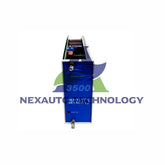Impact on the Future of Work
The increasing adoption of humanoid robots in manufacturing is likely to bring about significant changes in the future landscape of work. While these robots may automate certain routine and repetitive tasks, they are also expected to create new job opportunities in fields that require human creativity and oversight. For instance, roles related to programming, where professionals will need to code and fine-tune the AI systems, as well as maintenance, where technicians will be responsible for ensuring optimal robot performance, will likely see growth. Furthermore, the rise of human-robot interaction specialists will become essential as companies seek to optimize collaboration between human workers and robotic counterparts.

Capabilities and Benefits
Humanoid robots boast several advantages over traditional industrial robots, particularly in environments where collaboration with human workers is crucial. Their design mimics the human form, which allows them to navigate and operate in spaces designed for people. This characteristic fosters collaboration and adaptability in tasks such as:
- Assembly: Performing intricate assembly tasks that require precision.
- Inspection: Conducting quality control checks that necessitate fine, detail-oriented movements.
- Maintenance: Carrying out repairs and upkeep of machinery in a more intuitive manner.
Moreover, equipped with advanced sensors and artificial intelligence, these robots can learn from their environments and adapt to new tasks, thus offering operational flexibility that traditional robots may lack.

Challenges and Limitations
Despite their vast potential, humanoid robots face significant challenges that need to be addressed for widespread adoption. Key issues include:
- High Costs: The initial investment for humanoid robots can be substantial, often limiting access for smaller companies.
- Limited Battery Life: Many humanoid robots currently operate on batteries that require regular charges, impacting their efficiency during long production runs.
- Integration Complexity: Incorporating humanoid robots into existing manufacturing processes can be intricate and time-consuming, requiring thorough planning and testing.
- Further AI Advancements: Continuous development in artificial intelligence is crucial to enhance the decision-making capabilities of these robots.
Addressing these challenges will be essential to unlocking the full potential of humanoid robots in manufacturing.
The Rise of Humanoid Robots in Manufacturing
Humanoid robots are gaining traction across various sectors, particularly in manufacturing, where they are revolutionizing workflows. Designed to mimic human movements and capabilities, these robots are particularly adept in settings where flexibility and human-like dexterity are required. In addition to traditional tasks, they are increasingly involved in:
- Training: Assisting human workers by demonstrating tasks and providing real-time feedback.
- Research and Development: Participating in R&D processes to create more efficient manufacturing techniques.
- Safety Protocols: Enhancing safety by performing dangerous tasks on behalf of human workers.
The integration of humanoid robots into existing manufacturing workflows not only enhances productivity but also helps in meeting the demands of a fast-paced market.

Case Studies and Real-world Applications
Numerous case studies have illustrated the profound impact of humanoid robots in real-world applications. For example:
- A major automotive manufacturer has integrated humanoid robots for assembly line processes, resulting in a 20% increase in production efficiency.
- In electronics manufacturing, humanoid robots have been deployed to conduct detailed inspections, significantly reducing error rates.
- A consumer goods company has utilized humanoid robots to assist in logistics and packaging, improving speed and accuracy.
These examples underscore the versatility and effectiveness of humanoid robots in enhancing efficiency, quality, and safety in various industries.
Conclusion
Humanoid robots are poised to revolutionize manufacturing industries by bridging the gap between human ingenuity and robotic efficiency. By understanding their capabilities, limitations, and potential implications for the workforce, businesses can make informed decisions about adopting these technologies. As the landscape of manufacturing continues to evolve, investing in humanoid robots may not only enhance operational efficiency but may also play a critical role in preparing for a future where humans and robots work side by side.
Check below popular items for more information in Nex-Auto Technology.
| Model | Title | Link |
|---|---|---|
| 330130-030-03-05 | Bently Nevada 330130-030-03-05 Extension Cables | Learn More |
| 330130-030-10-00 | Bently Nevada 330130-030-10-00 Extension Cables | Learn More |
| 330130-030-10-05 | Bently Nevada 330130-030-10-05 Extension Cables | Learn More |
| 330130-030-11-00 | Bently Nevada 330130-030-11-00 Extension Cables | Learn More |
| 330130-030-11-05 | Bently Nevada 330130-030-11-05 Extension Cables | Learn More |
| IC693ALG391 | GE Fanuc IC693ALG391 Analog Current Output Module | Learn More |
| IC693CBL300 | GE Fanuc IC693CBL300 I/O Bus Expansion Cables | Learn More |
| IC693MDL730 | GE Fanuc IC693MDL730 Discrete Output Module | Learn More |
| IC693CPU313 | GE Fanuc IC693CPU313 Embedded CPU Baseplate | Learn More |
| IC693CPU331 | GE Fanuc IC693CPU331 Modular CPU Series 90-30 | Learn More |
| IC693MDL231 | GE Fanuc IC693MDL231 Isolated Input Module | Learn More |
| IC693MDL654 | GE Fanuc IC693MDL654 Positive Negative Logic Input Module | Learn More |






